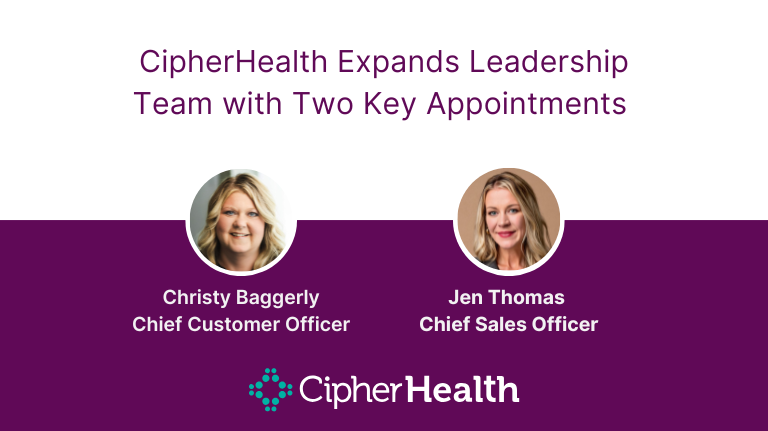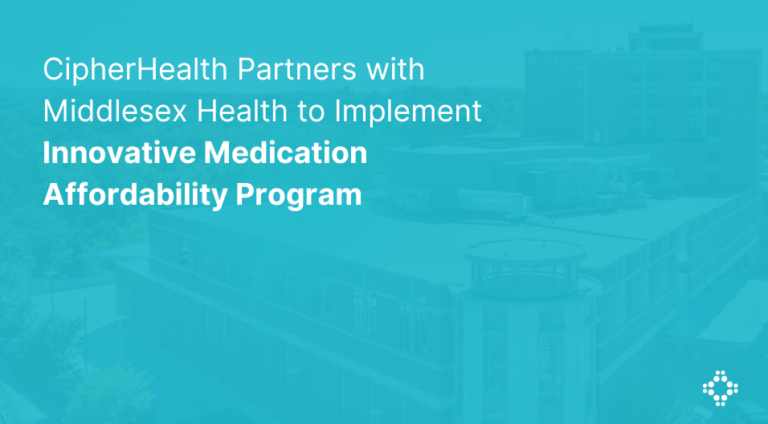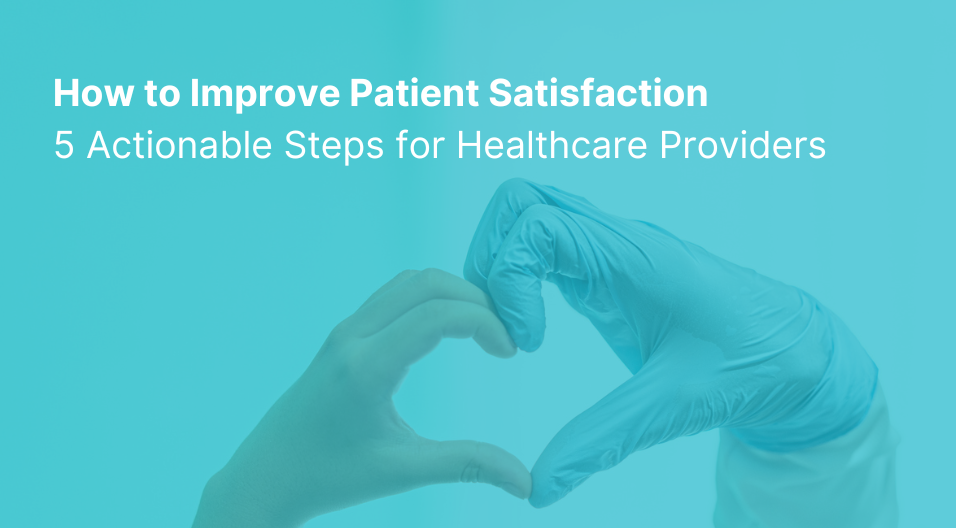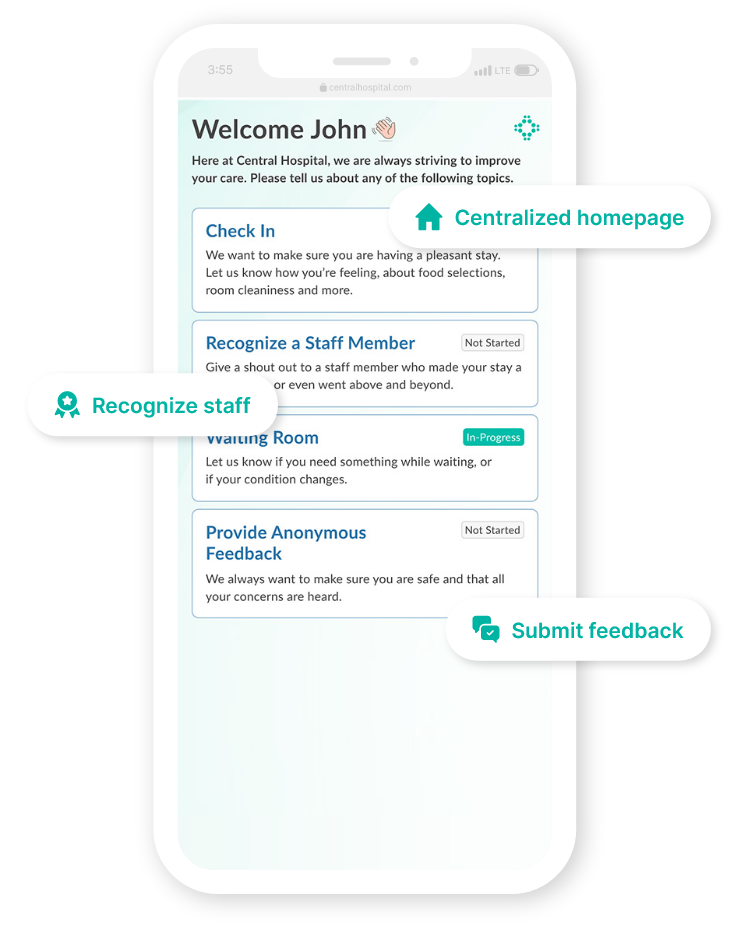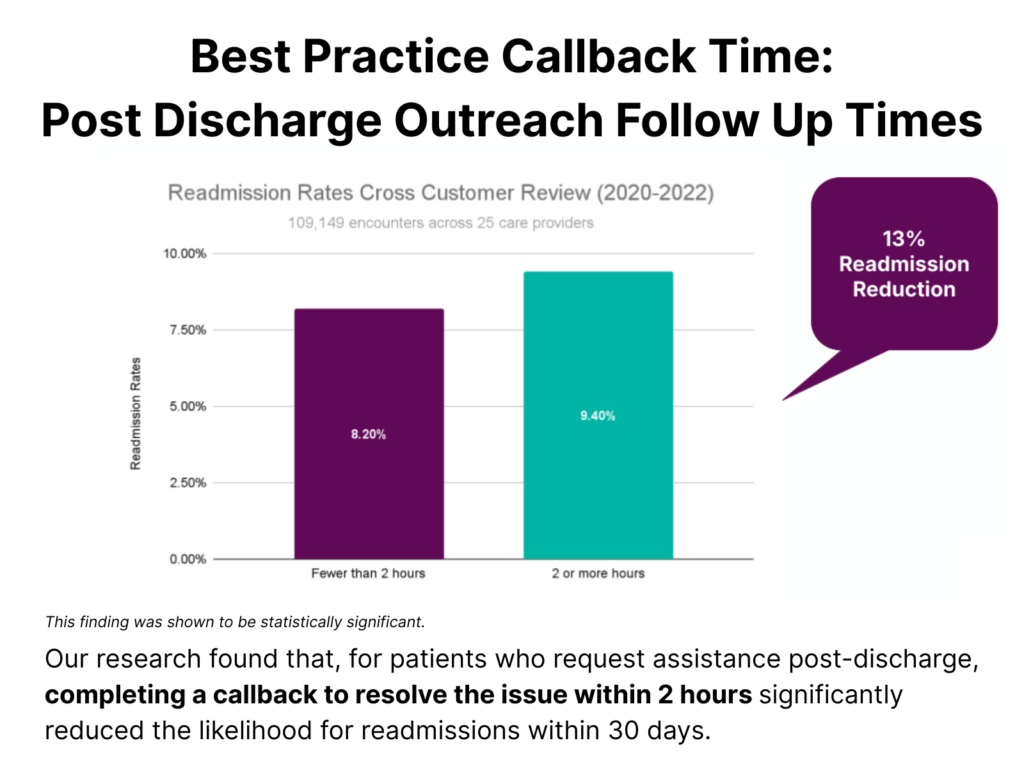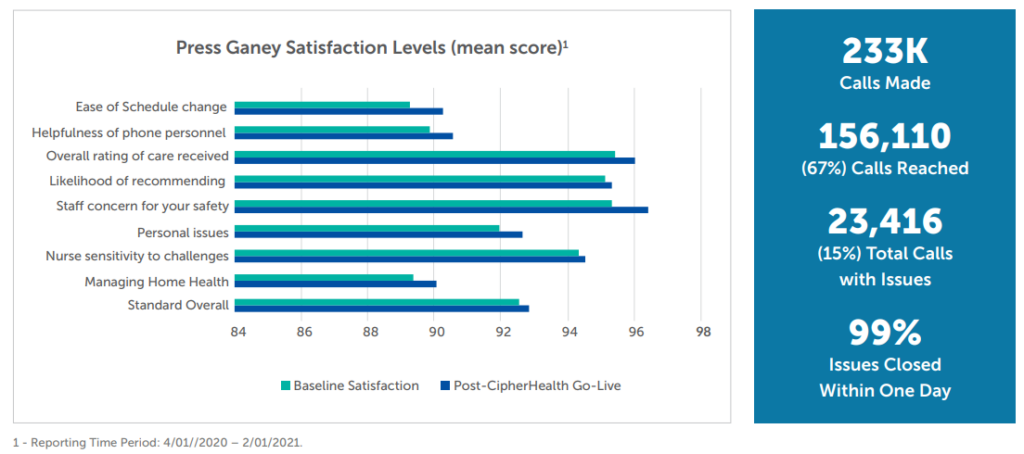Health systems are struggling to do more with less while maintaining high standards for care. At the same time, patients are demanding a better experience. Studies show a correlation between patient experience and improved clinical outcome with patient satisfaction metrics.
This highlights the importance of not just meeting but exceeding patient expectations. In this article, we’ll share five actionable steps you can take to improve patient satisfaction.
At CipherHealth, we help bring these strategies to life. Our suite of digital products help your care teams personalize care interactions, capture patients’ experience in real time and increase overall satisfaction—leading to increased HCAHPS Survey scores.
What Is Patient Satisfaction?
Patient satisfaction reflects how well a healthcare experience meets a patient’s needs and expectations. It is more than just a metric—it impacts health outcomes, adherence to treatment and whether patients return or recommend their provider.
Key factors of patient satisfaction include:
- Provider communication and empathy: Do patients feel heard and respected?
- Clear, transparent information: Are diagnoses, treatments, and next steps easy to understand?
- Wait times and appointment access: How quickly can patients get care when they need it?
- Quality of care and outcomes: Do treatments lead to real improvements in health?
- Facility environment: Is the space clean, comfortable and welcoming?
5 Actionable Steps to Increase Patient Satisfaction
From communication to follow-ups, every touchpoint shapes patient satisfaction. Here are five actionable steps to enhance it:
Step 1: Improve Communication at Every Touchpoint
Patients feel more confident in their care when they receive clear, timely communication at every stage. Lack of information or delayed responses lead to frustration and distrust.
- Automate appointment reminders and secure messaging to reduce no-shows and keep patients informed.
- Offer self-service tools for checking wait times, managing appointments, and asking questions.
The benefits go beyond improving patient satisfaction—they also improve operational efficiency and drive revenue growth for your organization. Using CipherOutreach, Community Health Network added $3M in additional appointment revenue with automated appointment reminders.
Step 2: Personalize the Patient Experience
Patients feel valued when their care is tailored to their needs. Personalized interactions lead to higher satisfaction and better health outcomes.
- Enable self-service rounding or digital check-ins so patients can share concerns and receive timely responses.
- Train staff to engage meaningfully, ensuring interactions are thoughtful and responsive.
Here’s one hospital’s success story that highlights the power of personalization in action. A Level 1 Trauma Center improved patient experience with CipherHealth’s self-service rounding, enabling ED patients to access FAQs and request assistance via QR code or text link.
With over 2,000 rounds initiated and 58% identifying an opportunity area, staff could prioritize service recovery in real time—ensuring faster responses to patient needs while improving overall experience.
Step 3: Reduce Wait Times and Improve Comfort
Long waits and uncomfortable environments create stress and dissatisfaction, impacting both patient experience and hospital ratings. In fact, studies show that:
- Over 43% of patients cite long wait times as their biggest frustration in healthcare settings.
- Hospitals with shorter wait times tend to score significantly higher on HCAHPS satisfaction surveys.
Managing expectations and improving the patient environment make a significant difference in patient satisfaction:
- Keep patients updated on estimated wait times to reduce frustration.
- Ensure clean, quiet, and comfortable spaces with self-service tools for reporting needs.
Step 4: Follow-Up to Close the Loop
Patients want to feel supported after their visit, not forgotten. Proactive follow-ups can prevent complications, reduce unnecessary readmissions and build long-term trust.
- Use automated outreach to check in on patients after their visit, reinforce care instructions, and address any concerns.
- Provide an easy way for patients to ask follow-up questions or request additional support, ensuring continuity of care.
- Incorporate multi-channel communication (phone, text, web) to reach patients in the way they prefer.
Identify high-risk patients for enhanced follow-up based on clinical conditions and discharge status. Our research found that callbacks completed within 2 hours significantly reduce 30-day readmissions, ensuring timely intervention for post-discharge concerns. This not only improves patient outcomes but also reduces financial penalties associated with avoidable readmissions.
Step 5: Act On Patient Feedback
Improving satisfaction requires more than just collecting feedback—it’s about acting on it.
- Use surveys and real-time feedback tools to track trends and pinpoint areas for improvement.
- Empower staff to respond quickly, creating a culture of continuous improvement and patient-centered care.
By focusing on these key areas, healthcare organizations can create a seamless, patient-friendly experience that builds trust, improves satisfaction and leads to better clinical outcomes.
One health system that successfully put these strategies into action is Penn Medicine.
How Penn Medicine Boosted Patient Satisfaction
Penn Medicine Home Health launched the Wellness Call Program to enhance patient support between in-home visits. Using CipherOutreach, the program provided automated check-ins to monitor patient well-being, address concerns and detect early signs of health issues.
Here’s the key results Penn Medicine achieved:
- Patient satisfaction improved across all domains, with a median increase of 0.7 points
- The biggest gains were in Staff Concern for Safety, Ease of Schedule Change, and Nurse Helpfulness
- Over 233,000 wellness calls were made, reaching 67% of patients, with 99% of flagged issues resolved within a day
According to Penn Medicine, this proactive outreach not only improved survey scores but also strengthened patient trust. Their success shows that proactive follow-ups are key to closing the loop on patient care.
Achieving Lasting Patient Satisfaction Through Continuous Improvement
As seen across case studies, healthcare organizations that prioritize proactive communication, timely follow-ups and purposeful rounding achieve lasting improvements in satisfaction. Digital tools streamline outreach, enhance rounding and ensure patients feel heard beyond appointments.
By refining workflows and leveraging technology, organizations can drive higher satisfaction, better engagement and improved outcomes—ultimately fostering deeper trust between patients and providers.
Looking to make a lasting impact? Contact us today to explore how we can help you elevate care quality and build stronger patient relationships.


